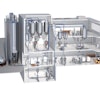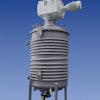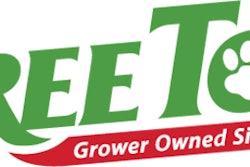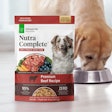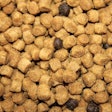
The demand for a functional aspect to pet foods is higher than ever. Pet owners have long looked to their pets’ food as a part of preventive health measures, and the last two years have taken that into overdrive at a time when humans are understandably more than a little preoccupied with their own health.
“Customer demand with respect to functional ingredients continues to be diverse,” said Michael Beckius, trade unit manager in the feed division of Scoular. “Whether the need is weight management, digestion, joint mobility or a multitude of other benefits, the goal is to establish a specific health benefit in pets that the consumer would want for themselves.”
It’s well-known by now that human preoccupations in the food space tend to make their way to the pet segment before too long, so paying attention to what’s happening on the human side of things is a good strategy in general.
“Not surprisingly, pet food trends continue to mirror those in human nutrition,” said Maygane Ronsmans, product manager animal nutrition at Beneo. “According to our new global study (a global online survey conducted in July 2021, “Consumer research on attitudes toward pet food”), the primary interest of dog and cat owners is for natural pet foods with additional health benefits that are also of the same quality as their own. Such demand for high quality, natural and healthy ingredients demonstrate the vast market potential that is out there for clean-label, health-promoting and no- or low-allergenic pet food ingredients.”
Ingredients seeing increased scrutiny beyond functionality needs
The top concerns from pet owners are all familiar but are coming in more combinations than ever as pet populations age and their human owners become more aware of their overall health needs. Additionally, the ingredients themselves are under increasing scrutiny as manufacturers require more information to satisfy their end customers.
“From a client’s perspective, supply, safety and proof of efficacy are main concerns,” said Eric Altom, Ph.D., technical nutritionist, animal health and nutrition for Balchem. “Finding a timely and consistent supply can be a challenge in today’s markets. And speaking of functional ingredients, knowing that the ingredient actually adds value to the animal is imperative to ensure maintaining trust with consumers and to not invalidate pack claims. Among this category are ingredients like vitamins and minerals, along with other materials like omega-3 fats, pro- and prebiotics, and whole diets formulated for specific needs like certain health conditions, improvement of certain characteristics like coat quality and more.”
The conversation around functional pet food ingredients also dovetails with a couple of significant trends in the industry: sustainability and traceability.
“Now more than ever, pets are like family,” said CoreFX Ingredients CEO Denis Neville and Director of Sales Martha Bennett. “As human consumer trends move to cleaner and traceable foods, pet owners want the same for their furry friends, too. Pet food retailers and manufacturers are actively seeking ingredients and materials that are not only traceable but sustainable as well.”
These needs aren’t going anywhere, so it behooves suppliers to make sure they can meet growing demand.
“As ideas on improving the health of pets continues to evolve, suppliers will need to strive to develop innovative solutions that help meet these complex needs,” said Beckius. “Success will require suppliers to create opportunities for manufacturers to achieve product differentiation while also meeting the needs of health-conscious consumers. Customers might want ingredients that are rich in antioxidants or are hypoallergenic, for example, but the need for ensuring those products are both ethically sourced and sustainable is of equal importance in the eyes of the consumers.”
Top functional request: Digestive health
For all the current functional options out there, digestive health continues to be a significant ask from pet owners.
“Interest in digestive or gut health has really taken hold,” said Jeannie Swedberg, director of customer development and marketing for Tree Top Inc. “This seems to be a crossover from human health where digestive health is linked to immune support and more. Research suggesting that digestive health is linked to a person’s overall health and wellbeing has pet parents seeking similar benefits for their fur babies.”
Beneo’s customer survey supports the growth of digestive solution requests in the pet space.
“As in human nutrition, healthy digestion is driving buying behaviors in pet foods, with 92% of pet owners saying that supporting digestive health improves the likelihood of them purchasing a product and 91% of owners looking for easy-to-digest products (see Figure 1),” said Ronsmans. “Notably the demand for prebiotics in pet food gathers pace and their benefits are widely perceived by pet owners, with 72% of dog owners and 68% of cat owners agreeing that adding them to pet food makes it seem healthier.”

As for probiotics, in September 2021 Future Market Insights released a report on the “Animal feed probiotics market” indicating that companion animals, equine and aquaculture combined were responsible for about 25.7% of the probiotics market in 2021. Further, demand from companion animals is expected to expand at 13.7% compound annual growth rate (CAGR) between 2021–2031 to be valued at US$1.53 billion by the end of 2031.
Likely trajectory of functional ingredients in pet food
All the main suspects — digestive health, joint health, skin and coat — will continue their reign in the functional space, but unsurprisingly plant-based functional ingredients are becoming a growing part of the conversation.
“Current market demand for pet food products is trending toward plant-based alternatives with reasonable flavor acceptance while still being efficacious,” said Neville and Bennett. “In the next year, the pet food industry will continue to align with that of the human food innovations. Real, authentic, true-to-nature, plant-forward and healthy will be key players.”
Tree Top, which provides fruit ingredients, said they’re seeing continued growth in demand.
“Plant-based ingredient requests will continue to expand,” said Swedberg. “The health halo of fruit and vegetables will spread further into the pet food/treat space.”
Treats are definitely an area to pay attention to, as their functional abilities may be more accessible to pet owners who may not want to change their pet’s diet entirely but are open to supplementing with something providing functional benefits.
“Beyond just the growth and differentiation of the multitude of food options, treats are starting to have functional purpose beyond bonding,” said Altom. “We are seeing treats as multivitamins, joint health, immune support, allergy relief (for the animal) and more. Along with this, there will be a continued drive for research into ingredients to effect various health benefits in order to further develop and support this market.”
2022 pet nutrition trends: Innovation, functionality

